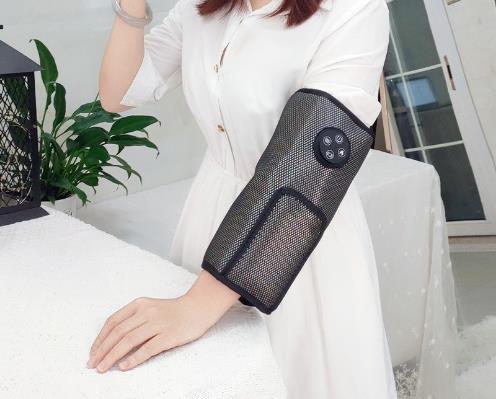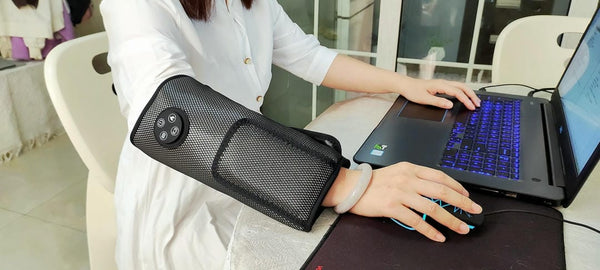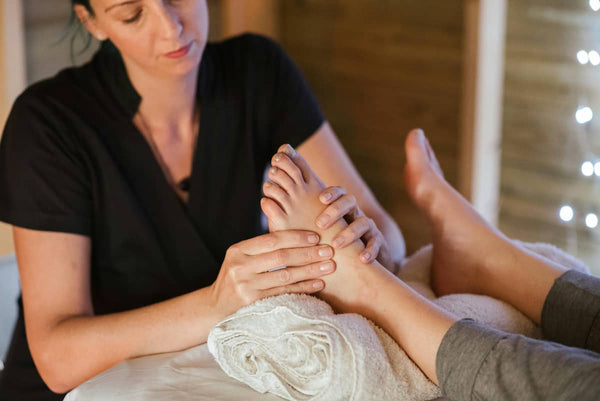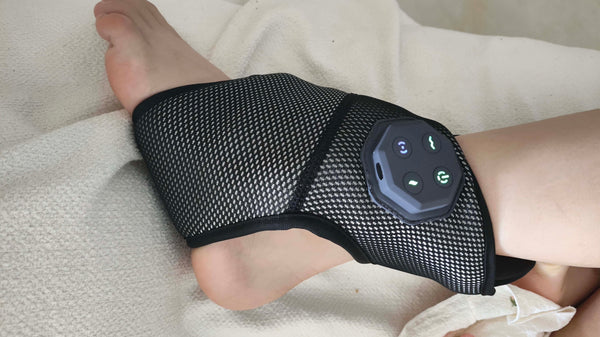
You've likely heard of Acupressure Massage, a therapeutic practice with ancient roots, but what exactly is it? And more importantly, does it live up to the claims of relief, particularly for common ailments faced by office workers, like neck tension or stress headaches? This article delves into the world of Acupressure Massage, exploring its core principles, benefits, and critically, the often-discussed topic of pain during treatment. Is discomfort a necessary part of the healing process, or a sign of something amiss? Let's uncover the nuances.
Originating from Traditional Chinese Medicine (TCM), Acupressure Massage operates on a fascinating philosophy of body energy. We'll explore this and how it translates into physical techniques aimed at restoring balance and promoting well-being. For those considering this therapy, understanding what to expect, including potential sensations, is key to a positive experience.
What is Acupressure Massage?
Acupressure Massage is a therapeutic technique derived from traditional Chinese medicine that involves applying pressure to specific points on the body, known as acupoints. These points lie along energy pathways called meridians. The fundamental purpose of Acupressure Massage is to stimulate these acupoints to clear blockages in the meridians, thereby promoting the smooth flow of Qi (pronounced "chee"), or vital life energy. According to TCM principles, when Qi flows freely, the body maintains health and balance; disruptions or blockages in Qi flow can lead to pain, illness, or discomfort. Thus, Acupressure Massage aims to restore this energetic equilibrium.
Unlike acupuncture, which uses fine needles, Acupressure Massage relies on the practitioner's fingers, palms, elbows, or specialized tools to exert pressure. This pressure can range from light touching to deep kneading, depending on the specific acupoint, the condition being addressed, and the individual's sensitivity. It's a non-invasive therapy often sought for pain management, stress reduction, and overall wellness, particularly relevant for office workers dealing with sedentary job-related strains.
The Roots of Acupressure Massage
The history of Acupressure Massage is deeply intertwined with the ancient medical traditions of China, dating back thousands of years. It shares its theoretical foundations with acupuncture, with both practices evolving from the same understanding of Qi, meridians, and the interconnectedness of the body, mind, and spirit. Early texts, such as the Huangdi Neijing (The Yellow Emperor's Classic of Internal Medicine), written between 475 BCE and 220 CE, lay out the foundational principles of these energy pathways and points.
Initially, these techniques were likely discovered through intuitive observation – people noticing that pressing on certain parts of the body alleviated pain or other symptoms. Over centuries, this experiential knowledge was systemized into the complex meridian theory we know today. Acupressure Massage, as a more accessible form of stimulating acupoints without needles, became a widely practiced folk remedy and a formal part of TCM, passed down through generations and continuously refined. Its enduring presence speaks to a long history of perceived efficacy.
The Core Principles of Acupressure Massage
The core principle of Acupressure Massage revolves around the concept of Qi (vital energy) and its circulation through meridians (energy pathways). Traditional Chinese Medicine posits that a healthy body has a balanced and unobstructed flow of Qi. When this flow is disrupted or blocked, perhaps due to stress, injury, or poor lifestyle habits common in demanding office jobs, it can manifest as pain, illness, or emotional imbalance. Acupressure Massage works by applying targeted pressure to specific acupoints along these meridians.
This stimulation is believed to:
- Release blockages and restore the smooth flow of Qi.
- Promote blood circulation to the area, bringing oxygen and nutrients and removing waste products.
- Trigger the body's natural self-healing mechanisms, including the release of endorphins, which are natural pain relievers.
- Balance the body's yin and yang energies, fostering overall harmony.
What Techniques Are Used in Acupressure Massage?
Practitioners of Acupressure Massage employ a variety of manual techniques to stimulate acupoints. The choice of technique often depends on the specific point being treated, the desired effect, and the individual's condition and comfort level. It’s not just random poking; there’s a real art and science to it. For instance, a common issue for office workers like tension in the shoulders might involve different techniques than those used for digestive support.
Common techniques include:
- Firm, sustained pressure: Applying steady pressure directly onto an acupoint for a period ranging from a few seconds to several minutes. This is perhaps the most fundamental technique in Acupressure Massage.
- Kneading: Using circular motions with the thumbs, fingers, or palms to deeply massage the tissue around an acupoint, helping to release muscle tension and improve circulation.
- Rubbing: Briskly rubbing an area to generate warmth and stimulate energy flow, often used over larger muscle groups.
- Tapping or Percussion: Lightly tapping or striking acupoints with fingertips or the side of the hand to invigorate the area.
- Stretching and Joint Mobilization: Some Acupressure Massage styles incorporate gentle stretching or joint movements to enhance the therapeutic effects.
The Benefits of Acupressure Massage
Many individuals, especially those in sedentary roles like office workers, turn to Acupressure Massage seeking relief from various ailments and to enhance overall well-being. One of the primary reported benefits is pain reduction. Indeed, a key question many ask is: Is acupressure massage effective for pain relief? For many, the answer is yes, particularly for musculoskeletal issues like back pain, neck stiffness, and joint pain. It's also frequently used to alleviate headaches, including tension headaches, with some specific techniques focusing on the best acupressure points for headache relief, such as those at the temples or base of the skull.
Beyond pain, Acupressure Massage is renowned for its stress-relieving properties. This directly addresses how acupressure helps with stress by promoting relaxation and calming the nervous system. Other potential acupressure benefits and risks include:
- Improved sleep quality.
- Reduced anxiety and nervousness.
- Enhanced digestion and relief from issues like bloating.
- Boosted immune system function (though more research is needed here).
- Increased circulation and reduced muscle tension.
Understanding Pain in Acupressure Massage: Navigating the Sensations
The experience of pain or discomfort during an Acupressure Points and Massage Treatment is a significant point of discussion and, for some, a concern. Is it normal? Does it mean it's working? Or is it a sign of improper technique? The answer is nuanced, and perspectives vary. Some practitioners and recipients believe that a certain level of "therapeutic discomfort" or "good pain" is a normal, even necessary, part of the process. This sensation often arises when pressure is applied to areas of significant tension or energy blockage. The idea is that this discomfort signifies the release of stagnation and the initiation of healing. Many report feeling significantly better and more relaxed after this initial, sometimes intense, sensation subsides, often over subsequent sessions of Acupressure Massage.
However, it's crucial to distinguish this therapeutic sensation from excessive pain that could indicate overly aggressive or improper manipulation. Skilled therapists are trained to gauge an individual's tolerance and adjust pressure accordingly. Communication is really, really key here; you should always feel empowered to speak up if the pressure is too intense. Excessive pain is not the goal and can be counterproductive, potentially leading to muscle guarding or even injury. The aim is a "comfortable challenge," not outright agony. If you're experiencing sharp, unbearable pain, it’s vital to inform your therapist immediately so they can modify their approach for your Acupressure Massage.
It's also important to acknowledge that Acupressure Points and Massage Treatment may not be suitable for everyone, or certain approaches may be better than others depending on individual health. For instance, individuals with certain chronic diseases, acute inflammation, open wounds, or during pregnancy (specific points are contraindicated) may need to avoid or modify Acupressure Massage. Some users with pre-existing chronic pain conditions have reported increased pain rather than relief. In such cases, or if traditional hands-on therapy feels too intense, alternative therapies or tools might be more appropriate. For example, gentle forms of massage, or even modern technological aids like the KLCOSY massager, which can offer controlled pressure and heat, could be considered as alternatives to explore for managing discomfort, particularly for at-home use for office workers seeking daily relief.

What to Expect During an Acupressure Massage Session?
If you're an office worker considering your first Acupressure Massage, knowing what to expect can ease any apprehension. Typically, a session begins with a brief consultation. Your therapist will ask about your health history, specific concerns (like that persistent shoulder pain from hunching over a desk), lifestyle, and what you hope to achieve from the Acupressure Massage. This helps them tailor the treatment to your individual needs. You'll usually lie on a comfortable massage table, fully clothed or covered by a sheet, depending on the style of acupressure and your comfort.
The therapist will then begin applying pressure to various acupoints. Sensations can vary widely:
- Some points may feel tender, achy, or even sharp for a moment – this is often where the "therapeutic discomfort" comes in, especially in areas of high tension.
- Other points might elicit a dull ache or a feeling of warmth and release.
- You might feel sensations in areas distant from the point being pressed, which is a common experience related to meridian pathways.
Acupressure Massage vs Reflexology: What's the Difference?
Often, people wonder about Acupressure Massage vs Reflexology, as both involve applying pressure to specific points for therapeutic benefit. While they share some similarities, their underlying theories and application areas differ. Acupressure Massage is rooted in Traditional Chinese Medicine and works with acupoints located all over the body along energy meridians. The goal is to influence the flow of Qi throughout the entire system to address a wide range of health issues, from localized pain common in office workers to systemic imbalances.
Reflexology, on the other hand, primarily focuses on reflex points found on the feet, hands, and ears. The theory behind reflexology is that these points correspond to specific organs, glands, and parts of the body. By stimulating these reflex points, reflexologists aim to promote health in the corresponding body areas. Key distinctions include:
- Scope of Points: Acupressure Massage uses points across the entire body; reflexology concentrates on feet, hands, and ears.
- Theoretical Basis: Acupressure Massage is based on meridian theory and Qi; reflexology is based on zone theory and reflex arcs.
- Application: While both use pressure, the specific techniques and the mapping of points to body systems differ significantly.
Finding a Qualified Practitioner: Seeking Professional Acupressure Massage Near Me
If you're looking to experience the potential benefits of Acupressure Massage, especially for issues like work-related stress or chronic desk-job discomfort, finding a qualified practitioner is paramount. When searching for "professional acupressure massage near me," don't just pick the first name that pops up. Look for therapists who have received formal training and certification from reputable institutions in Acupressure Massage or a related field like Traditional Chinese Medicine. Experience also counts for a lot; a practitioner who has been working with clients, perhaps even specializing in conditions common to office workers, will likely have a more refined touch and deeper understanding.
Consider these steps when searching:
- Check for credentials, licenses (if applicable in your region), and memberships in professional organizations.
- Read reviews and testimonials from previous clients. What do they say about the therapist's skill and approach to Acupressure Massage?
- Don't hesitate to ask about their experience with your specific concerns, such as neck pain, headaches, or stress.
- A good practitioner will conduct a thorough intake interview on your first visit to understand your health history and goals for the Acupressure Massage.
- Ensure they create a comfortable and communicative environment where you feel safe to discuss any discomfort during the session.
Acupressure Massage offers a time-honored approach to wellness, potentially providing significant relief from pain, stress, and other common complaints, particularly for office workers facing daily physical and mental strains. Its core principles, rooted in the flow of vital energy, guide a hands-on therapy that aims to restore balance within the body. While the question of pain during treatment is valid, understanding that some therapeutic discomfort can be part of the process—distinct from harmful pain—is crucial. Open communication with a skilled, qualified practitioner ensures the Acupressure Massage experience is both safe and beneficial.
Ultimately, whether Acupressure Massage is "effective" is often a personal experience, but its long history and the positive reports from many users suggest it holds considerable value. Exploring this therapy with an informed perspective, understanding both the acupressure benefits and risks, can be a rewarding step on your journey to better health.
Frequently Asked Questions (FAQ)
Is acupressure massage effective for pain relief?
Many individuals find Acupressure Massage effective for various types of pain relief, including back pain, neck tension (common in office workers), headaches, and joint pain. It is believed to work by stimulating the body's natural pain-relieving mechanisms, such as endorphin release, improving circulation, and reducing muscle tension. The effectiveness can vary depending on the individual, the skill of the practitioner, the specific condition being treated, and the consistency of treatment. While many report positive outcomes, it's not a guaranteed cure-all, and results can differ. Discussing your specific pain with a qualified practitioner can help determine if Acupressure Massage is a suitable option for you.
How often should you get acupressure massage?
The frequency of Acupressure Massage sessions depends on several factors, including the nature and severity of your condition, your individual response to treatment, and your wellness goals. For acute issues, you might initially benefit from more frequent sessions, perhaps once or twice a week. As your condition improves, sessions can often be spaced further apart, such as every two weeks or monthly, for maintenance and general well-being. For chronic conditions or ongoing stress management, regular sessions (e.g., weekly or bi-weekly) might be beneficial. Your therapist can help devise a treatment plan tailored to your specific needs after an initial assessment.
Can you do acupressure on yourself?
Yes, self-acupressure is possible and can be quite effective for managing minor symptoms like headaches, stress, or mild muscle tension – things an office worker might experience regularly. There are many well-known acupoints that are easily accessible on your own body. For example, pressing the point between your thumb and index finger (LI4 or Hegu) is often used for headaches and general pain. You can find resources (books, reputable websites, or guidance from a practitioner) to learn basic self-Acupressure Massage techniques. However, for complex or chronic conditions, or for a full-body treatment, it's always best to consult a professional Acupressure Massage therapist. They can provide a comprehensive treatment and ensure points are stimulated correctly and safely.




0 comments